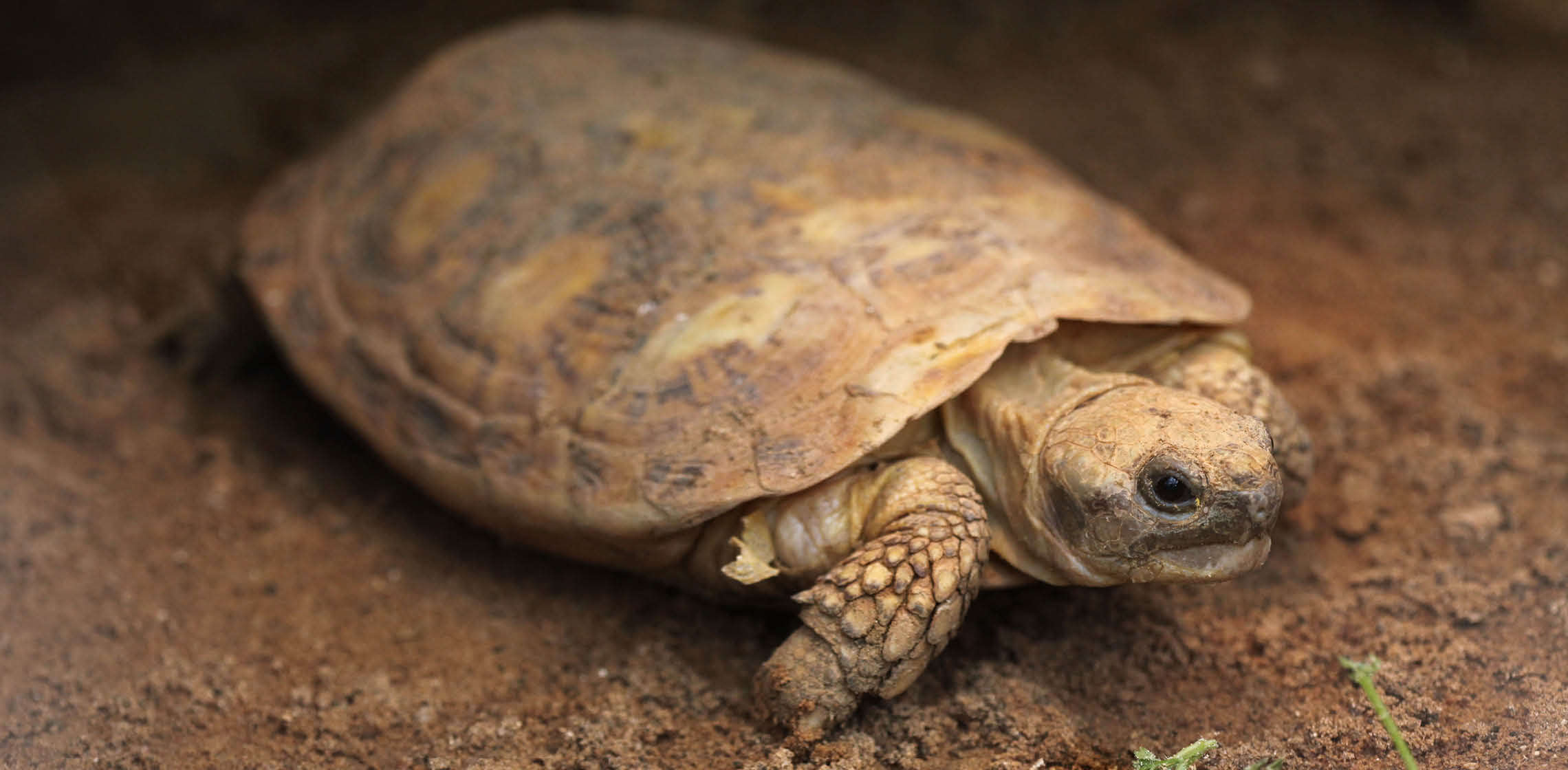Location in Zoo
Geographic Range
Scientific Information
Lifestyle and Lifespan
Conservation

Unique among most tortoises, the Pancake Tortoise doesn't have a high, rigid carapace (upper shell). Instead, its carapace is extremely flattened and is very flexible (because the underlying bone isn't solid, but instead has many openings).This tortoise may look unusual, but it is perfectly adapted to its rocky habitat. With its flat, flexible shell this reptile can squeeze into rocky crevices (great places to hide from predators or cool off during the heat of the day). This tortoise also has strong limbs that it uses to wedge itself into the rocks. Its strong limbs are also great for climbing around the uneven terrain. This tortoise's brown carapace also helps it blend into its rocky surroundings. The tortoise's camouflaged appearance is particularly useful when it goes on foraging missions. An an herbivore it is a strict vegetarian that eats various kinds of grasses and leaves. This tortoise does most of its feeding early in the morning.
Sexual Dimorphism. The carapace of an adult measures about 6 inches, with females slightly larger than males.
The preferred habitat is areas of thorn bush or savanna with small hills and rocky outcrops (kopjes).
Found at altitudes of 1000 to 6000 feet in isolated locations of Kenya and Tanzania.
Eats succulents, thorn bush, grass and other plants in the wild. In captivity, will accept a variety of fruits and vegetables.
Primary consumer.
Diurnal. Feeds in the morning and evening. The Pancake Tortoise spends a lot of its time among the rocks, where it is sheltered. It is mainly active in the morning, emerging to bask and feed. Generally only emerging from shelter for about an hour, it is quite mobile and active during that time. When threatened, it will run into a crevice and use its legs to wedge itself as deeply as it can, remaining there until the danger is gone.
These tortoises are surprisingly social, and get along well in a group as long as there is enough food for all. As many as ten tortoises have been found sharing the same crevice.
Mating takes place in January and February, with a single egg laid in July or August. Males fight for access to females during the mating season, in January and February, with large males tending to get the most chances to mate. Nesting in the wild seems to occur in July and August, although clutches are produced year-round in captivity. The female digs a nest cavity about 7.5-10 cm deep in loose, sandy soil. Usually one egg is laid at a time, but a female can lay multiple eggs over the course of a single season, with eggs appearing every 4-8 weeks.
The hatchling has a hard shell, which quickly becomes flat and soft. When these tortoises hatch, they are about an inch long and have a domed shell much like other species of tortoise. The shell flattens out as the tortoise grows.
This species is not presently threatened, but may become so unless trade is regulated. Listed as Vulnerable by the IUCN.
Don't buy a Pancake Tortoise as a pet!
It can climb vertical crevices in the rocks using the technique mountaineers call "chimney climbing"; the carapace is pressed against one wall and the feet against the other and the tortoise can wriggle upwards.